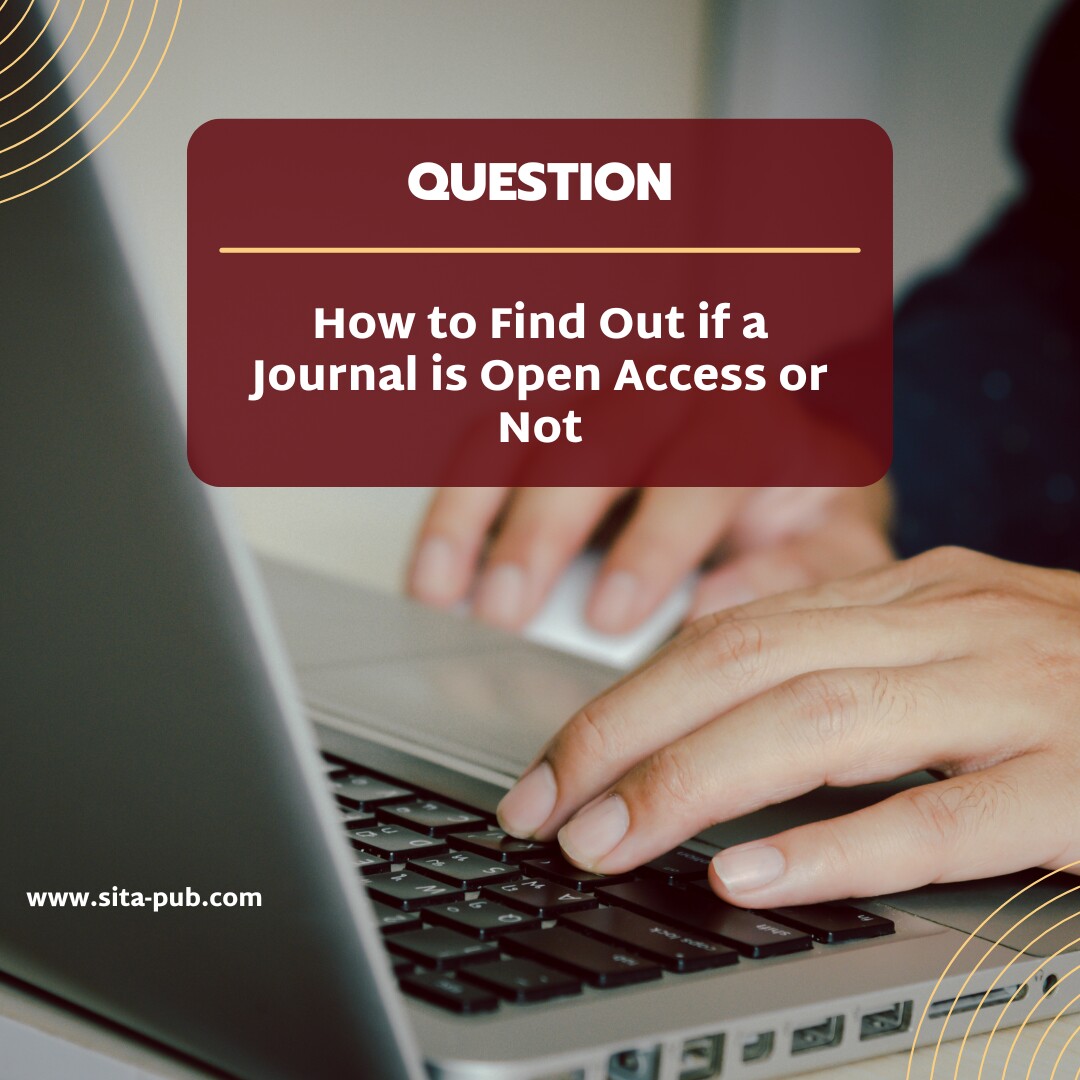How to Find Out if a Journal is Open Access | Check Open Access Status


In today's rapidly evolving academic landscape, understanding the type of journal you are submitting to is essential. Particularly, many researchers wonder how to tell if a journal is open access (OA) or not. Open-access journals allow free access to research articles for anyone, providing a barrier-free platform for scientific knowledge. In contrast, traditional subscription-based journals often have paywalls that restrict access to their content. This article will guide you through the steps to easily determine whether a journal is open access, helping you make the best decision for your research publication.

The simplest way to check if a journal is open access is by visiting its official website. Most journals clearly indicate their access model in sections such as:
About Us
For Authors
Submission Guidelines
Look for terms like “open access,” “free access,” or "OA" (open access). Many journals also display clear icons or labels, such as an "Open Access" badge, on the homepage or near individual articles. This will give you an immediate indication of the journal's access model.
Some journals use a hybrid model, meaning they offer both subscription-based and open access options. Under this model, researchers can choose to make their specific article open access for a fee. If you find the option to pay for open access or see a mention of Article Processing Charges (APCs), the journal is likely a hybrid one.

A reliable and trustworthy tool for finding open-access journals is the Directory of Open Access Journals (DOAJ). The DOAJ is a comprehensive database of high-quality, peer-reviewed open-access journals.
Visit doaj.org
Enter the journal's name in the search bar
Browse through the results to confirm if your journal is listed
If the journal appears in the DOAJ directory, it is confirmed as an open-access journal.
Open-access journals typically charge Article Processing Charges (APCs) to cover publishing costs. These fees are often required to make an article freely accessible online. If the journal lists APCs on its website, this is a strong indication that it follows an open-access model. However, some open-access journals may be funded by institutions and do not charge authors any fees, so always review the journal’s APC policy.
If the journal is published by a large academic publisher like Elsevier, Springer, or Wiley, you can check their open access policy. These publishers often offer both traditional and open-access journals, sometimes under different models:
Gold Open Access: All content is freely available and accessible to everyone.
Hybrid Open Access: Some content is open access, and some requires a subscription.
Make sure to verify if the journal you are interested in follows either of these models.
Several scholarly databases can help determine a journal’s access model:
Scopus
Web of Science
Google Scholar
These indexing services often link to the journal’s homepage, where you can find details about its access policy.
You can even use Google Scholar’s filter options to display only open-access articles, making it easier to navigate.
Many open-access journals use Creative Commons (CC) licenses to manage how articles can be shared and reused. Common licenses like CC-BY (Attribution) or CC-BY-NC (Attribution-NonCommercial) indicate open-access content. When you see a journal article or publication marked with a Creative Commons license, it is likely available for free.

Academic libraries are valuable resources for finding open-access journals. Your university or institution’s library staff can guide you in using journal databases, help you check a journal’s access policy, and ensure that you meet institutional and funding requirements for open-access publishing.
Some journals also allow authors to post their work in open-access repositories or preprint servers, such as PubMed Central or arXiv. Even if a journal itself isn’t fully open access, it may allow authors to share their articles in these repositories, making them freely available to the public.
Determining whether a journal is open access is an essential task for researchers who want to maximize the visibility and impact of their work. By visiting the journal’s website, using directories like DOAJ, checking for APCs, and understanding the publisher’s access policies, you can easily identify open-access journals. Open-access publishing removes barriers to knowledge and increases your research’s reach, helping it make a global impact.

Are you ready to share your research with the world?
If you have any questions, inquiries, or would like to learn more about our services, please don't hesitate to reach out to us. Our dedicated team is ready to assist you.